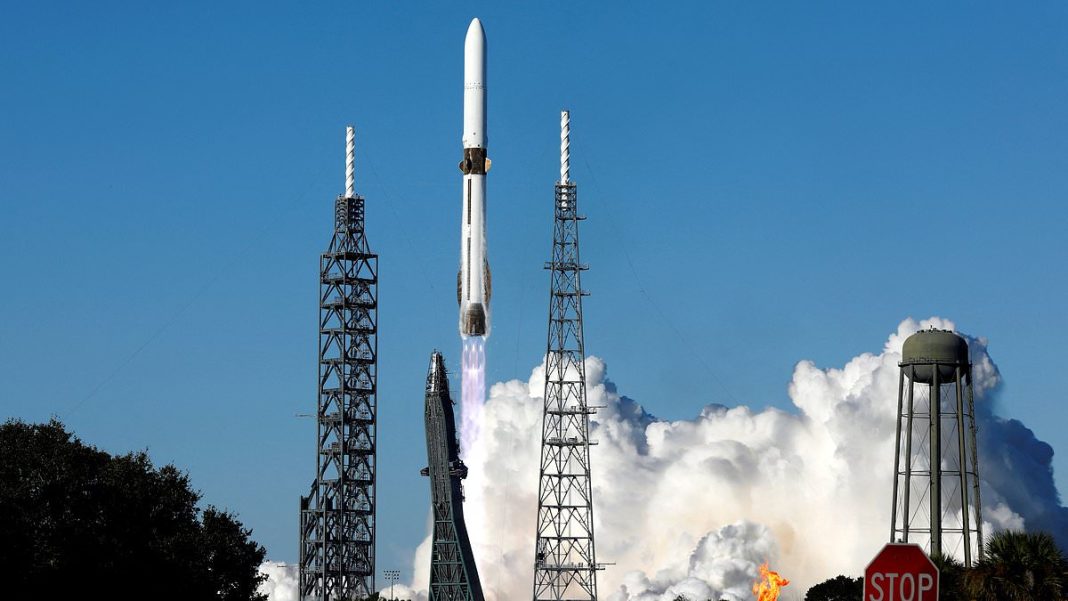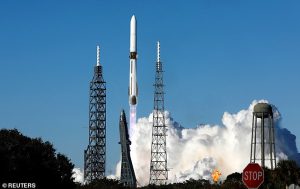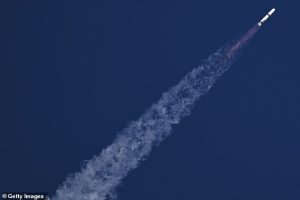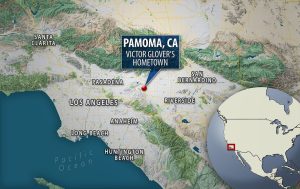Blue Origin Successfully Launches NASA Mars Mission in Space Race Milestone
Jeff Bezos’ Blue Origin has successfully launched two NASA spacecraft to Mars aboard its New Glenn rocket, marking a significant milestone in the intensifying space race with Elon Musk’s SpaceX. The mission achieved a crucial booster recovery for the first time, positioning Blue Origin as a serious competitor in deep space exploration.
Key Mission Details
- Launch: New Glenn rocket from Cape Canaveral, Florida at 15:55 local time
- Payload: NASA’s twin ESCAPADE Mars orbiters
- Recovery: Booster successfully landed on barge 375 miles offshore
- Arrival: Mars orbit expected in 2027
- Budget: $80 million mission cost
Mars Mission Objectives
The ESCAPADE (Escape and Plasma Acceleration and Dynamics Explorers) spacecraft will study Mars’ upper atmosphere and magnetic fields to understand how solar wind has stripped away much of the planet’s atmosphere. This research could reveal how Mars transformed from a potentially habitable world with water bodies into the barren desert we see today.
After lingering near Earth for about a year, the orbiters will use Earth’s gravity to slingshot toward Mars, arriving in 2027. The mission represents a cost-effective approach to planetary science, with the successful booster recovery being critical to reducing launch expenses.
Technical Specifications
- Rocket Height: 321 feet (98 meters)
- Thrust: 17,100 kN
- Low-Earth Orbit Payload: 45,000 kg
- Successful Launches: 2
- Reusability: First stage designed for 25+ flights
Sean Duffy, acting NASA administrator, says: ‘All of this information will be critical to protect future NASA explorers and invaluable as we evaluate how to deliver on President Trump’s vision of planting the Stars and Stripes on Mars.’
Space Race Intensifies
This successful launch positions Blue Origin as a direct competitor to SpaceX’s Starship rocket. While SpaceX secured the Artemis III lunar landing contract, Blue Origin holds the Artemis V mission to bring astronauts to the moon around 2030. The company plans to launch a prototype ‘Blue Moon’ lunar lander on New Glenn in the coming months.
The mission had been delayed four days due to poor weather and the strongest solar storm in two decades, which created aurora visible as far south as Florida. As the spacecraft escaped Earth’s atmosphere, Blue Origin employees celebrated by chanting “Next stop, moon!” signaling the company’s lunar ambitions.
This represents only the second successful launch for New Glenn, following January’s test flight that delivered a prototype satellite to orbit but failed to recover the booster. The ability to reliably recover and reuse boosters is essential for Blue Origin to compete effectively with SpaceX, which has been landing boosters for nearly a decade.














